
Dacia Bigster vs Kia Sportage facelift: who wins the battle of the new hybrid SUVs?
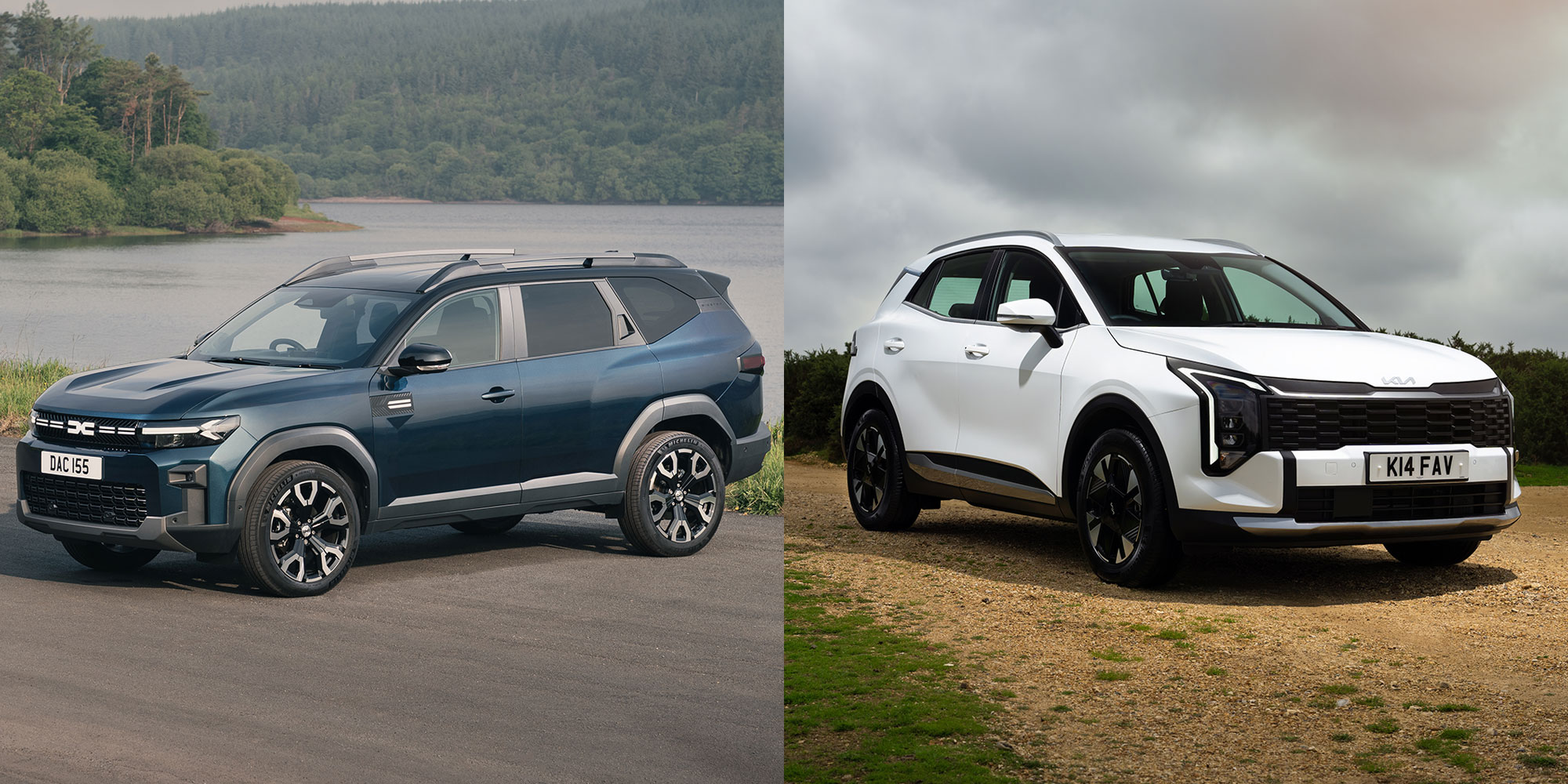
SUVs outsell all other types of new car, and the Kia Sportage is the UK’s second highest-selling car so far in 2025. It was also updated this year, but how does it compare to one of the newest entrants to the family SUV market: the Dacia Bigster?
In 30 years, the Kia Sportage has gone from being an anonymous budget offering to one of the UK’s most popular new cars. The current generation was launched in 2022 and was updated this year.
It has plenty of rivals, with one of the cheapest now being the new Dacia Bigster Hybrid. Launched this year, it’s the largest SUV in Dacia’s range and based on the Dacia Duster.
In this article, and ahead of full lab tests, we’re comparing the two to see if the keenly-priced Bigster can rival the more expensive Sportage.
Read on to find out how both models stack up for performance, on-board tech, price and more, based on our first drives conducted by our cars expert Dino Buratti.

Dacia Bigster vs Kia Sportage: key specs
| Dacia Bigster Hybrid | Kia Sportage Hybrid | |
|---|---|---|
| List price (from) | £28,190 | £34,425 |
| Length (metres) | 4.57 | 4.54 |
| Width (metres) | 2.069 | 1.865 |
| Boot space (litres) | 612 | 587 |
| Fuel consumption (mpg) | 60.1 | 44.1-50.4 |
| Power (hp) | 155 | 238 |
| CO2 emissions (g/km) | 105 | 126-145 |
Price
Both models are available with three trim level options. The entry-level Bigster Hybrid Expression costs £28,190, with the top-spec Extreme version just a little more at £29,990. Kia’s entry-level Pure Hybrid model will set you back £34,425, while the top-spec all-wheel drive GT-Line S version is £43,725.
The entry-level Bigster is one of the cheapest hybrid SUVs available, costing less than models like the MG HS Hybrid and Citroen C5 Aircross. However, it’s worth noting that, unlike the Bigster, the Renault Symbioz Hybrid is currently available with 0% APR finance deals (see our guide to car finance for more on how to pay for a car).
While the Kia is significantly more expensive than the Bigster, the entry-level model does slightly undercut the Nissan Qashqai e-Power and is also cheaper than other rivals, including the Ford Kuga Hybrid and Hyundai Tucson Hybrid.
Note that the top-spec Sportage Hybrid is the only version available with all-wheel drive (AWD), and that AWD versions of the Kuga and Tucson are much cheaper than the Sportage.
The larger Nissan X-Trail e-Power and Subaru Forester are also available for less than the Sportage.
Performance
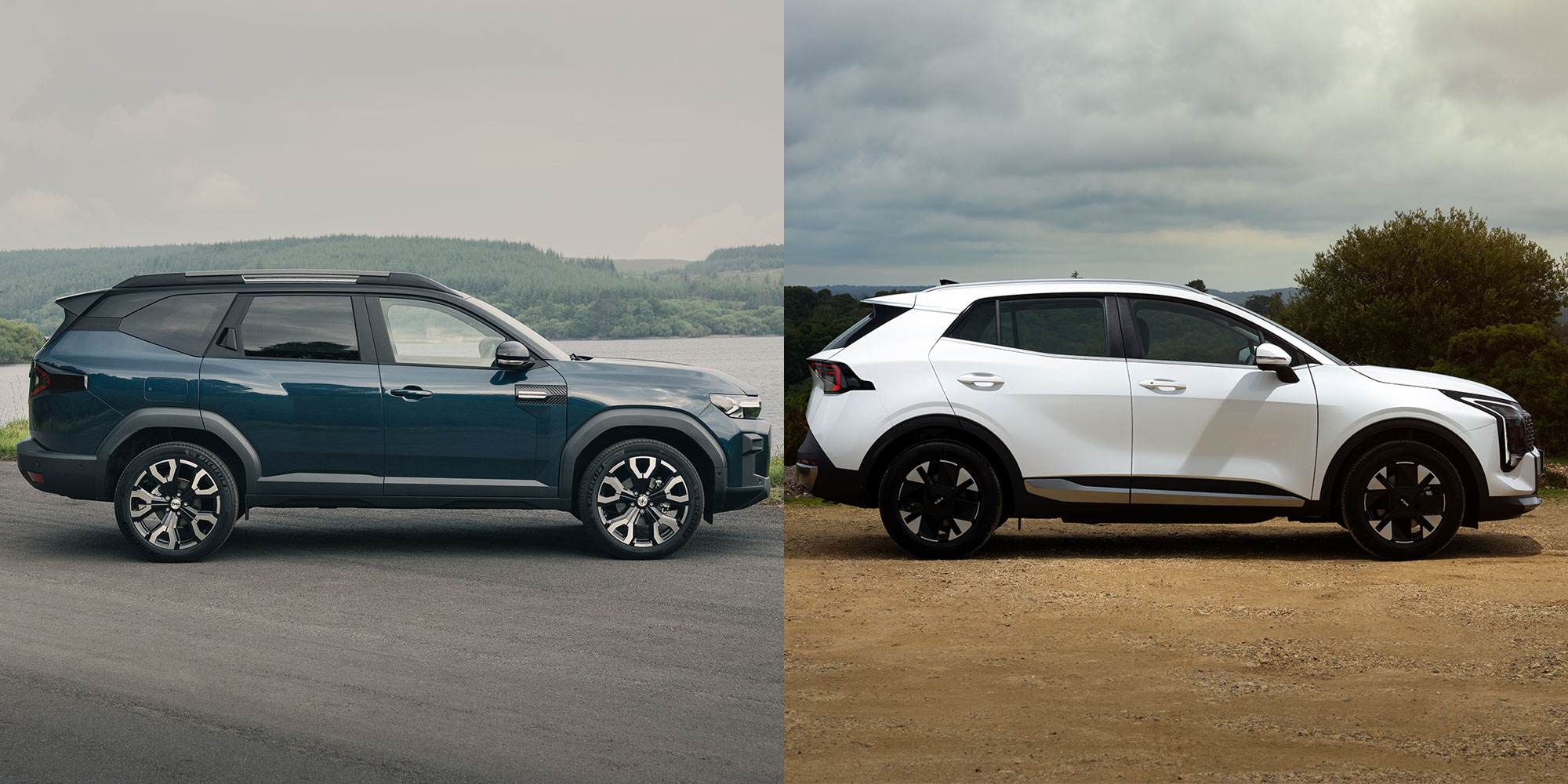
All versions of the facelifted Sportage Hybrid have 238hp – that’s 83hp more than the Bigster Hybrid.
It’s therefore not surprising that I thought the Sportage offers the best performance out of the two. It’s also quite refined and I heard the engine in the cabin only when accelerating hard and at higher speeds (above 40mph).
While the Bigster Hybrid is slower to accelerate, it’s by no means bad and certainly quick enough to make joining a motorway easy. However, I found refinement to be a major issue with the Bigster, in which I felt vibrations more clearly in the cabin than with the Sportage. The transition from the engine to the electric motor can also be quite prominent.
The gearshift paddles for the facelifted Sportage Hybrid now control regenerative braking in the Eco driving mode and the three settings work well. But in my test drive I found it’s best to not change gear manually in Sport mode – the gear changes are slow and I occasionally found the car simply chose to ignore my requests. As the gearbox has only six speeds, it’s also not the smoothest or most refined system around.
The Bigster uses a similar gearbox to parent company Renault. In the Bigster it only has four speeds along with two EV speeds. Although it worked fine in general use, I did notice that it isn't always responsive and can sometimes select the wrong gear. It doesn’t have paddle shifters, either. I also occasionally noticed some loud scratching noises when the Bigster changed gears.
On twistier roads, the Sportage performs better than many other SUVs as body roll is limited. The steering system is precise, direct (for an SUV, at least) and enables you to easily position the car on the road.
I also thought the Bigster was quite agile for an SUV in corners, although the steering system isn’t as direct or precise as I'd like.
Both cars suffer from a vague centre steering position, meaning you’ll frequently find yourself making adjustments on motorways, but this was far more pronounced with the Bigster.
Ride and build quality
Both the Sportage and Bigster are available with conventional suspension systems; the adaptive damper system that’s available on some EU-market Sportage cars still isn’t available in the UK.
I thought both cars offered good motorway comfort, and although I did notice potholes and road joints, it was only minor; imperfections on country and town roads were more pronounced, though. I also noticed that the Sportage’s body moved less on undulating roads than the Bigster’s.
The Bigster’s seats manually adjusted and more basic than the Sportage, with adjustments only for height, backrest angle and seating position. They’re fairly comfortable, but I prefer softer backrests. The base of the seat in the Bigster could also be longer for taller people like me (I’m 6ft 2in). The Bigster Journey model I drove has a basic in/out lumbar adjustment setting for the front seats, but I didn’t find the rear seats particularly supportive or comfortable.
In contrast, I thought the Sportage’s driver’s seat was more comfortable, especially in the top-spec GT-Line S model as it’s electrically-adjustable and has a tilting seat base. All cars also have electric lumbar support. As with the Bigster, there’s no lower leg support.
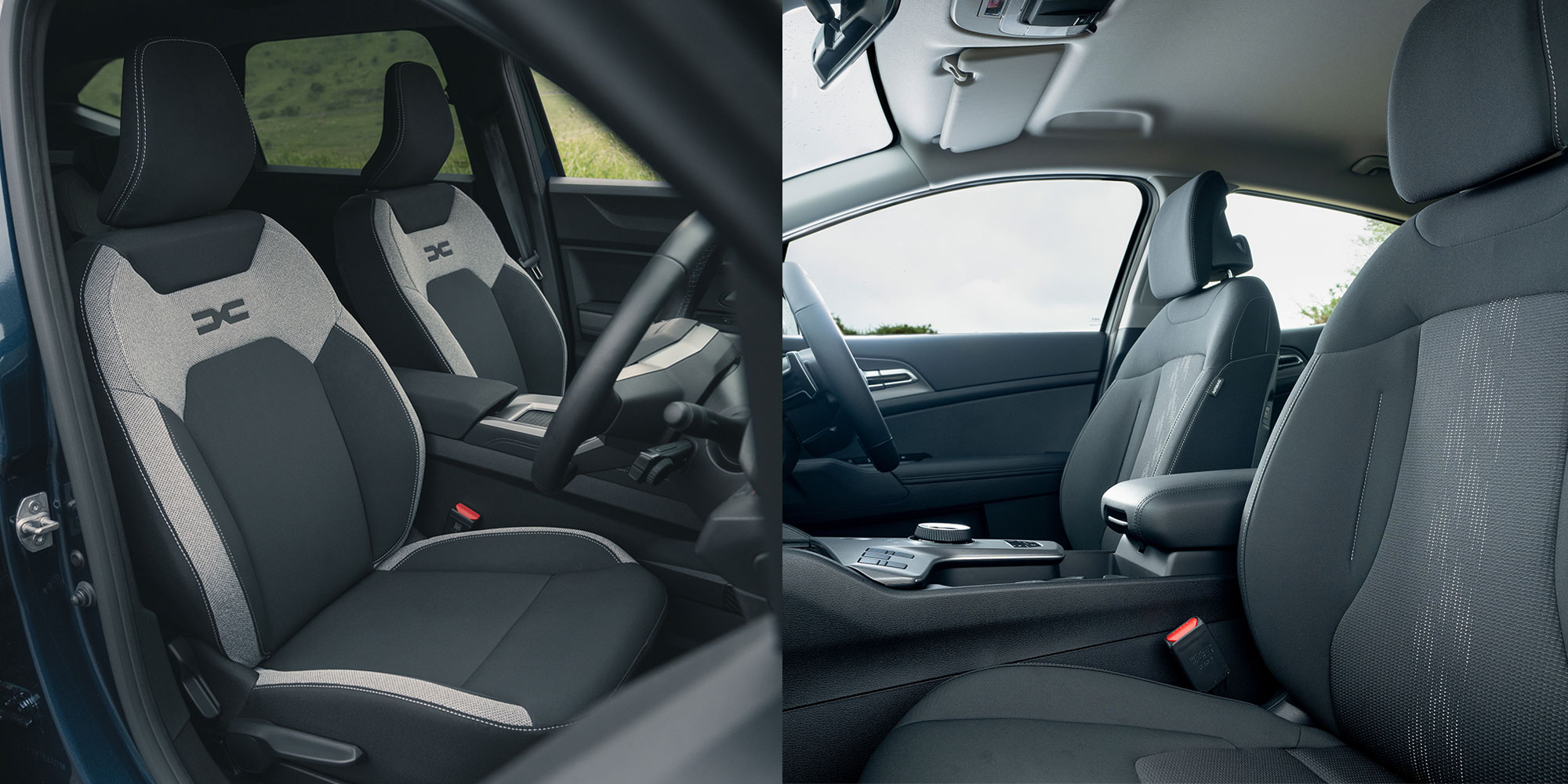
GT-Line S Sportage models come with a panoramic sunroof. If you’re tall like me, I’d avoid this trim entirely as although legroom is decent, it leaves barely enough headroom to sit comfortably. Cheaper Sportage models offer more headroom for both front and rear passengers.
In contrast, the Bigster is much more spacious and I could sit with ease in the front and outer rear seats when the driver’s seat was set to accommodate me, despite there being more headroom than legroom.
Basic Sportage models are less plush than top-spec ones as the door trims use fewer soft materials and much of the interior is formed of hard plastics. The top of the dashboard does use some soft-touch plastic, but I thought that the padding could be thicker.
Build quality is generally excellent although the luggage cover and central trim occasionally rattled during my test drives.
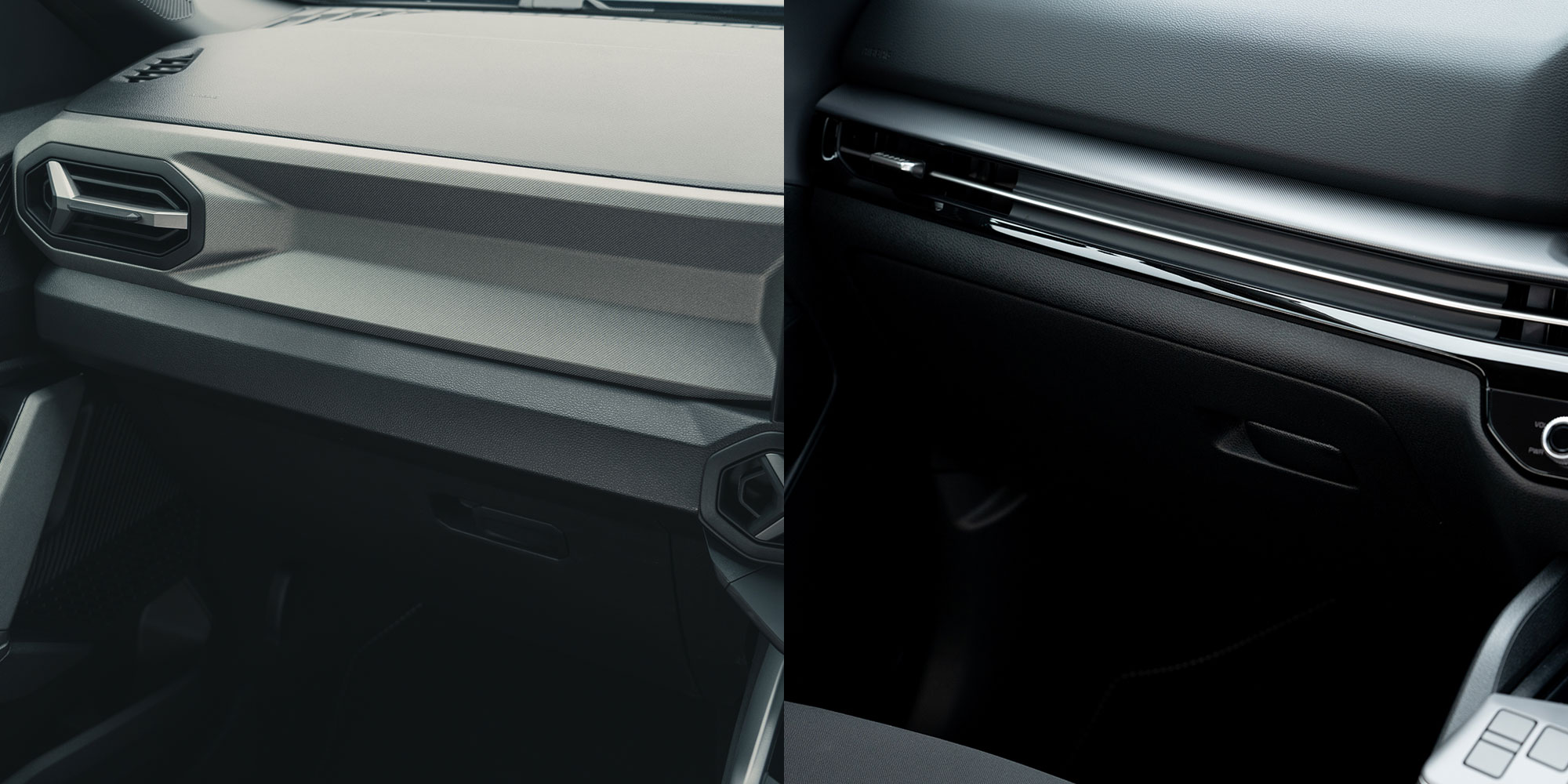
While the Bigster is well built, the interior is very basic and only small parts of the armrests have soft touch materials. Cheap-feeling plastics are used elsewhere and these can sometimes rattle. I also found the headlining to be a bit cheap.
Tech
My experience with the Sportage suggests most of the safety tech works well.
Unlike on other cars I've driven, the driver distraction monitor doesn’t activate unnecessarily, while the speed assistant and lane-change assist (that’s found on GT-Line S cars) proved reliable.
The only issue I noticed involved the lane keep assist technology, which was sometimes too eager to keep me away from the boundaries of country roads.
I was less impressed with the Bigster’s safety tech. While the lane keep system worked well, I found that the car’s adaptive cruise control system would occasionally cut out for no reason on the motorway, while even the closest distance setting still kept me quite far away from vehicles I was following. It also took the system some time to work out what to do after I’d changed lanes.
Additionally, the Bigster’s speed assist tech wasn’t always reliable and would sometimes identify the wrong speed limit for long stretches of journeys.
The Bigster’s touchscreen is easier to use than the Sportage’s as much less is controlled through it. This is thanks to the Bigster having physical climate controls, while the Sportage uses a touch panel below the touchscreen.
I found that the Bigster’s screen isn’t very responsive nor as easy to read as the Sportage’s, although it isn’t affected as much by glare as the Sportage’s. Both cars use physical steering wheel buttons, as opposed to touch-sensitive panels found on some other models.
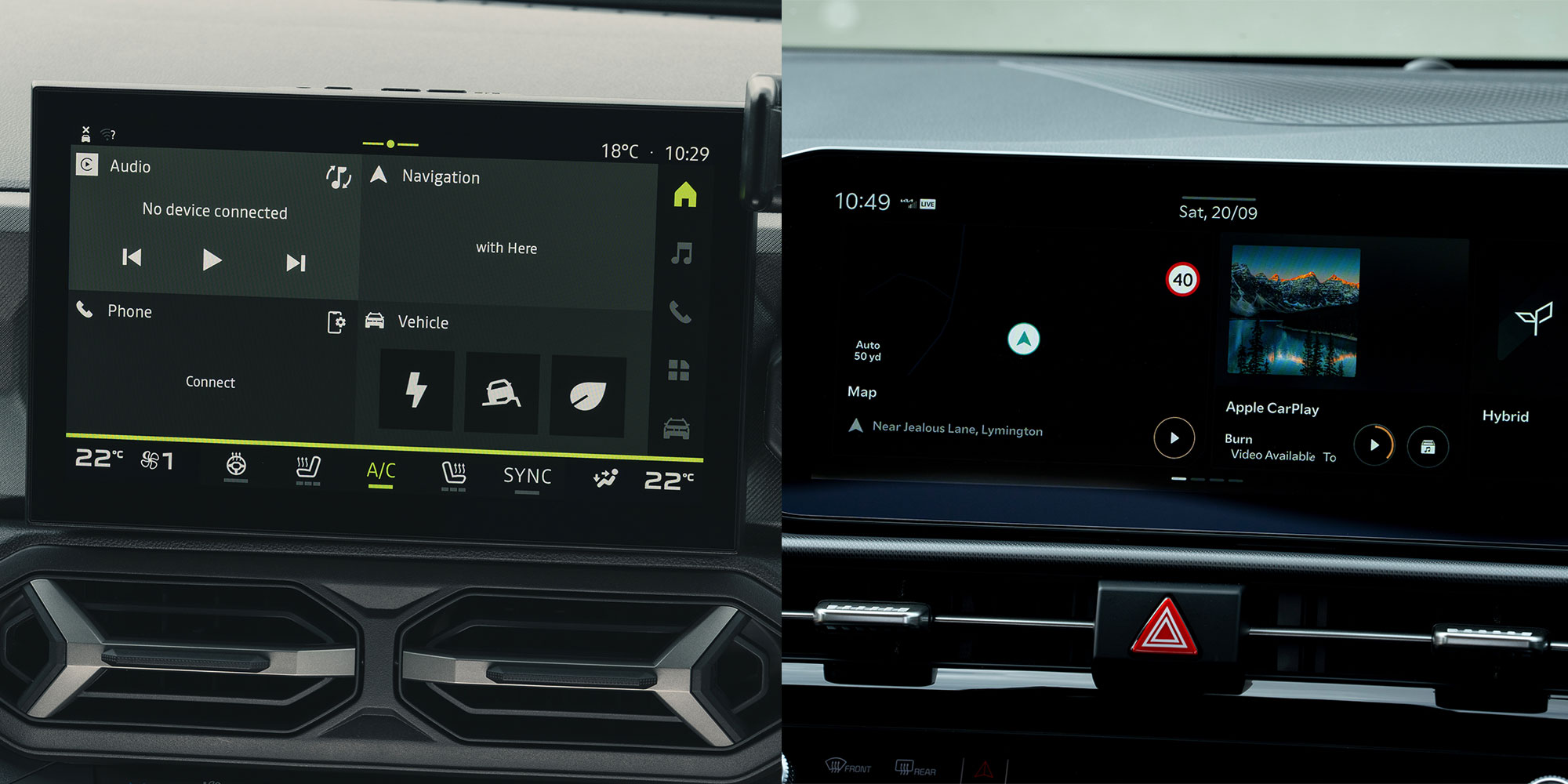
Most Sportage cars have a 4.2-inch instrument display while GT-Line S cars have a 12.3-inch display. The larger screen is easier to read as information is space better while it can also be configured more than the smaller screen. The rev counter is always visible on the smaller screen, but is only visible on the larger screen when you drive in Sport mode.
The Bigster I drove came with a 10-inch instrument display. It’s generally easy to read after some familiarisation, but can’t be configured as much as I'd like.
During my test drive of the Bigster, the GPS system that’s linked to the sat nav would sometimes get my location wrong which confused me when setting destinations.
Efficiency
While all versions of the Bigster Hybrid are claimed to average 60.1mpg overall, the front-wheel drive Sportage only averages a claimed 50.4mpg (it’s 44.1mpg for AWD models).
Our tests of other full hybrid Dacia and Kia models suggest that while these figures aren’t realistic in real-world conditions, the Kia is likely to get closer to its official mpg figures than the Bigster.
Our lab independently tests the economy of each car it examines and we’ll report back once both cars have been fully lab tested.
Final thoughts
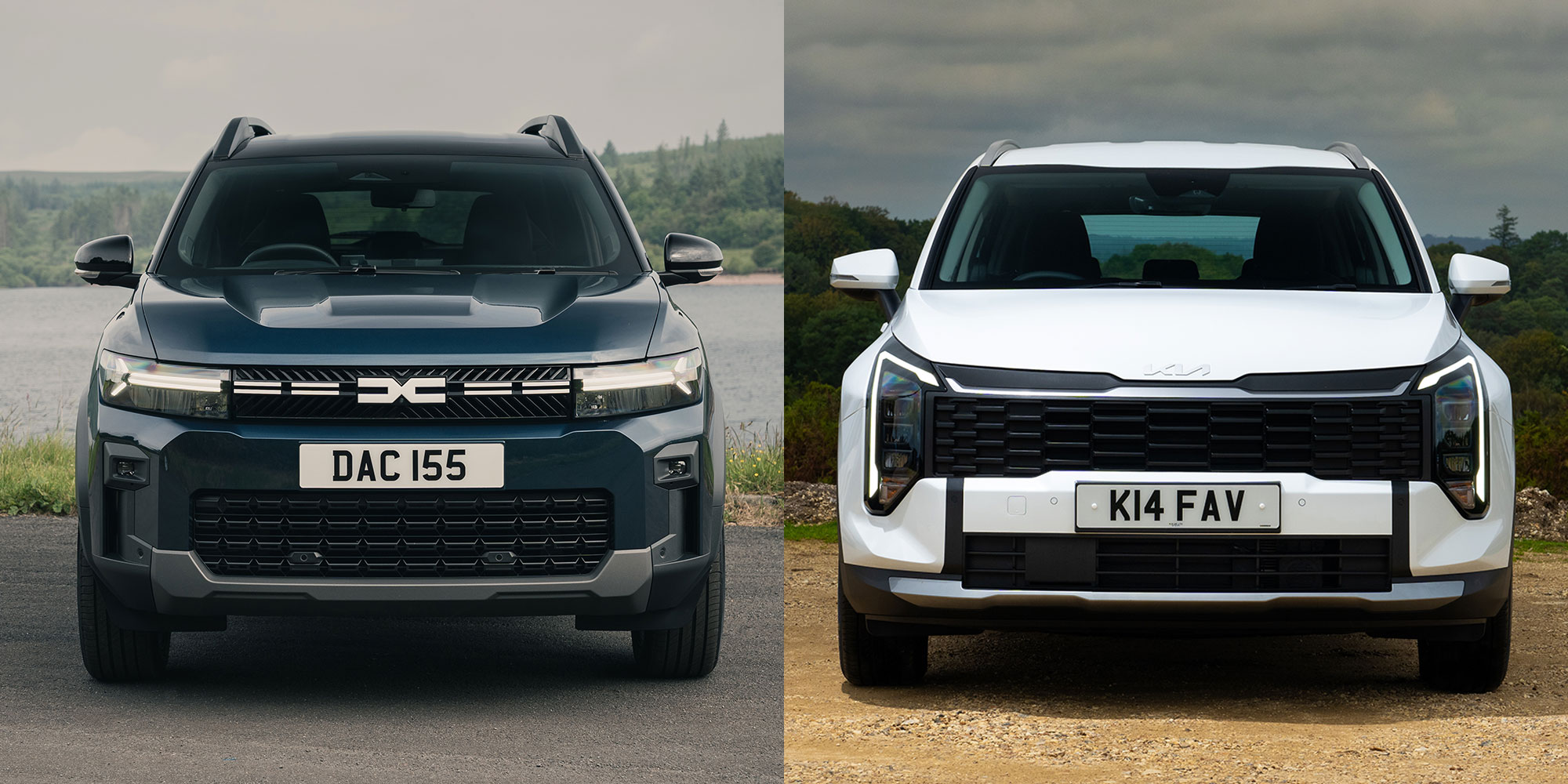
As always, we reserve final judgement on cars until we've lab tested them, but based on my experiences of both cars I’d go for the Sportage as it’s more refined and available with more equipment as standard.
However, looking at all the hybrid SUVs on the market, I’d probably end up going for something completely different. My head would pick the updated Nissan Qashqai e-Power because of its clever hybrid system, good dealer network and decent interior layout, but my heart would go for the Subaru Forester (which we've not yet lab tested) as it’s good value compared to rivals, very spacious and is likely to be very reliable considering Subaru’s reputation for reliability.
Ultimately, my wallet would push me towards the MG HS Hybrid because of its low price and long warranty, while the MG ZS Hybrid (which we’re currently lab-testing) is even cheaper.
Bargain-hunters may also be interested in the new KGM Torres Hybrid which, if past discounts of over £8,000 for the petrol Torres model are repeated, could end up being much cheaper than rivals.
Looking for more inspiration? Check out the best hybrid SUVs according to our lab tests.
